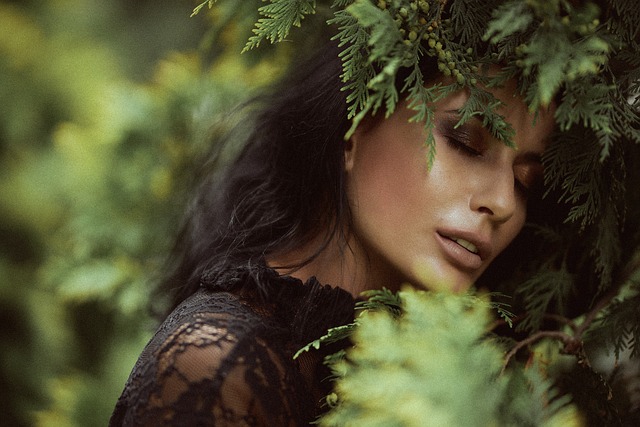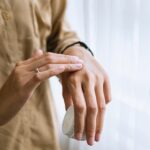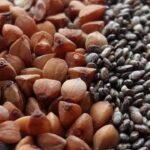Throughout history, different cultures have developed unique beauty rituals rooted in their traditions, beliefs, and available natural resources. These ancient beauty treatments often emphasize holistic approaches, using herbs, oils, and natural ingredients to enhance skin health, maintain youth, and promote overall well-being. From the Ayurvedic practices of India to the sophisticated skincare routines of Korea, these ancient treatments are still relevant today.
1. Ayurvedic Beauty Treatments – Ancient Wisdom from India
Ayurveda, the traditional system of medicine in India, offers a wealth of beauty treatments that focus on balance and harmony in the body. According to Ayurveda, beauty is not just skin deep but is a reflection of inner health. The key principle is that the body, mind, and spirit must work together in balance.
-
Abhyanga (Ayurvedic Massage) – This oil massage involves the application of warm herbal oils to the skin, promoting circulation, detoxification, and relaxation. The oils used are chosen based on your dosha (body type) to restore balance.
-
Turmeric and Honey Face Mask – Turmeric has anti-inflammatory and antioxidant properties, which help brighten the skin and reduce redness. When combined with honey, which is a natural humectant, it helps hydrate and heal the skin.
-
Amla (Indian Gooseberry) – Rich in vitamin C and antioxidants, amla is often used in Ayurvedic skincare for anti-aging benefits and to stimulate collagen production.
2. Ancient Egyptian Beauty Treatments – The Secrets of Cleopatra
The ancient Egyptians are often credited with some of the earliest beauty treatments that have stood the test of time. Cleopatra, in particular, was known for her luxurious beauty rituals that included bathing in milk and honey to keep her skin soft and glowing.
-
Milk and Honey Baths – Both milk and honey are packed with natural enzymes and hydrating properties that soften the skin, reduce pigmentation, and provide nourishment. Cleopatra’s famous milk baths remain a timeless beauty treatment.
-
Castor Oil for Hair and Skin – Castor oil has been used for centuries to promote hair growth, moisturize the skin, and even soothe conditions like eczema.
3. Korean Beauty Rituals – Skincare Routine
Korean beauty, or K-beauty, has become a global phenomenon, known for its meticulous and layered skincare routines. Rooted in centuries-old Korean traditions, these beauty rituals emphasize prevention, hydration, and gentle care for the skin.
-
Double Cleansing – The first step in the K-beauty routine involves an oil-based cleanser to remove makeup, followed by a water-based cleanser to thoroughly cleanse the skin. This ensures that all impurities and pollutants are effectively removed.
-
Sheet Masks – Originating in Korea, sheet masks are soaked in serums packed with vitamins, antioxidants, and hydration. They help to deliver intense moisture to the skin, leaving it smooth and glowing.
-
Essence – Known as the heart of Korean skincare, essence is a lightweight, hydrating product that helps prepare the skin for subsequent treatments. It typically contains high concentrations of active ingredients like hyaluronic acid, which helps to plump and moisturize the skin.
4. Chinese Beauty Treatments – Herbal Remedies and TCM
Traditional Chinese Medicine (TCM) is rich in ancient beauty treatments that focus on maintaining balance within the body and promoting skin health. Herbs, acupuncture, and the use of natural ingredients are central to Chinese beauty rituals.
-
Gua Sha – This traditional technique involves scraping a smooth tool over the skin to improve circulation, reduce puffiness, and promote lymphatic drainage. Often used on the face, gua sha is believed to help sculpt and lift the skin over time.
-
Chinese Herbal Masks – Ingredients like ginseng, licorice, and green tea are commonly used in Chinese beauty treatments to balance the skin, reduce inflammation, and brighten the complexion.
-
Jade Roller – Often paired with gua sha, the jade roller helps to cool the skin and reduce swelling, especially around the eyes. The rolling action stimulates blood flow, which can give the face a healthy, radiant glow.
5. Indigenous Beauty Practices – Native American Rituals
Many Native American tribes used local plants and herbs to create beauty treatments that aligned with nature’s healing properties.
-
Sweetgrass and Sage for Skin Health – Sweetgrass and sage have been used for centuries in skincare rituals, known for their purifying properties. Sage is also used in smudging ceremonies to cleanse both the body and the spirit.
-
Cedarwood Scrubs – Native Americans used cedarwood, a powerful antioxidant, to create scrubs that exfoliated and nourished the skin. These natural ingredients promote circulation and help to detoxify the skin.
Here are some tips for incorporating ancient beauty practices into your daily routine –


